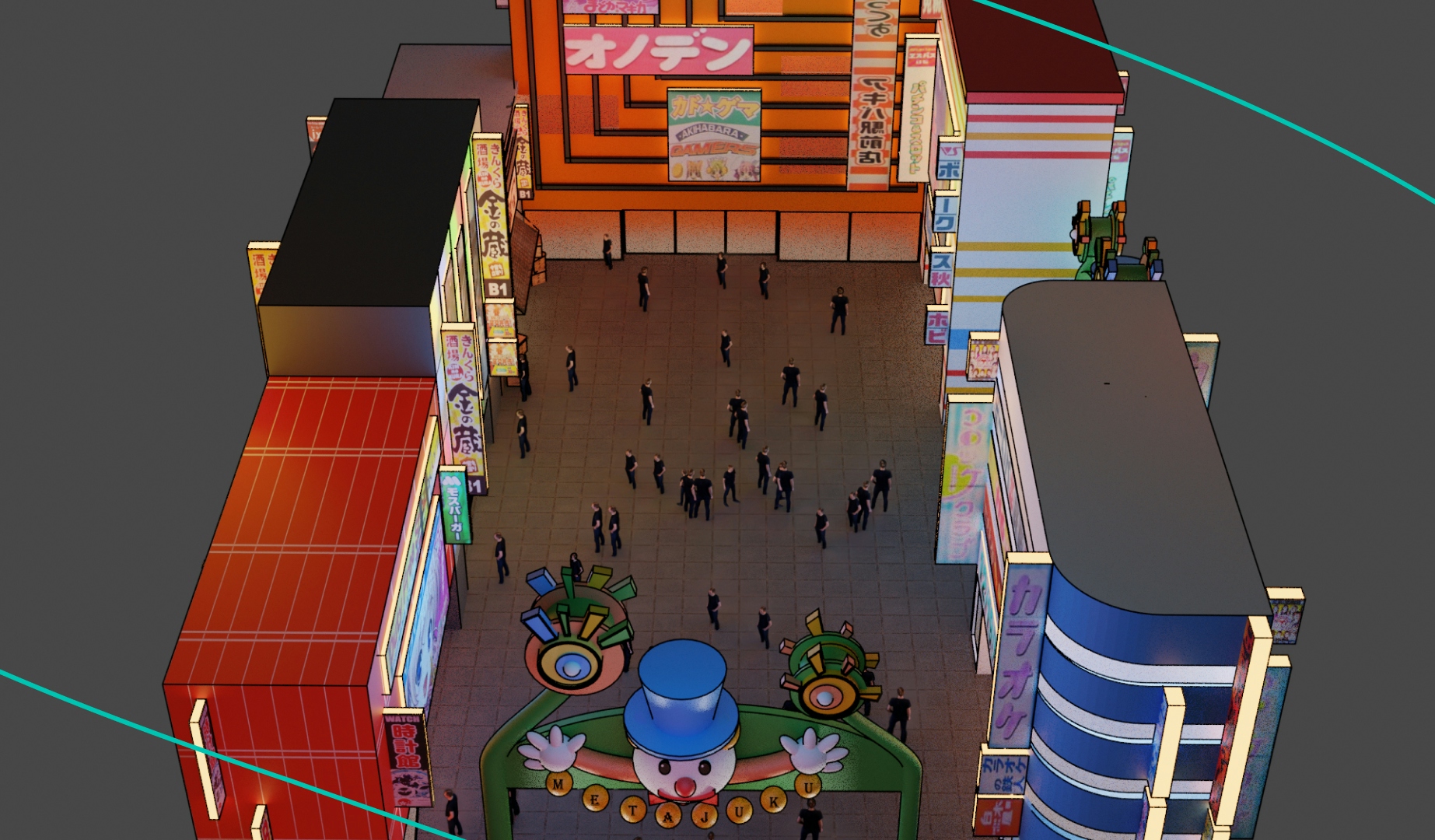It’s no secret that Big Tech wants to spice up your virtual life with the metaverse. Since last year, companies have put plans in motion to make the virtual space a reality: Microsoft bought a major game developer. Google’s reportedly got plans to build AR gear. And Facebook gave the ultimate flex when it rebranded to Meta. Then there are major retailers like Nike, which is planning to sell virtual sneakers.
But what exactly is the metaverse? Scenes from “The Matrix” or “Ready Player One” might be floating around in your head. The truth is that the metaverse can be a virtual space where you can do just about anything. And if that sounds a bit scary — and exciting — then you’re not alone. Here’s everything you need to know about the metaverse, from how to use it to the security concerns it’s raising.
What is the Metaverse?
Hi, it’s the future. But the word “metaverse” actually first entered the chat in 1992. When Neal Stephenson coined it in his sci-fi novel “Snow Crash.” In it, the characters use avatars in a virtual world to escape their bleak reality. Stephenson later told Vanity Fair he was just “making sh*t up.” But Big Tech said ‘hold my beer.’
Why now? There could be a variety of reasons from the fact that online connectivity and tech has improved, to the pandemic pushing people to go remote. Not to mention, the metaverse offers an opportunity to merge several on-going online ventures: shopping, entertainment, and work productivity.
The metaverse will basically be an advanced version of the internet. And will be made up of a number of 3D virtual environments or worlds that are connected. It’s virtual reality (VR), meets augmented reality (AR), meets NFTs, meets social commerce. Users will be able to create an avatar (your cartoon mini-me) to move between digital spaces to shop and socialize. (*Insert twin emoji.*) And it’ll be done with the help of AR glasses, VR headsets, smartphone apps or other devices like computers and gaming consoles.
Right now, people jump from website to website on the internet. But the metaverse will make it possible for avatars to move around different digital worlds. That’s one way to satisfy your wanderlust. Before we get into how you'll be able to use the metaverse, let's talk about why...
The Metaverse is not 100% up and spinning
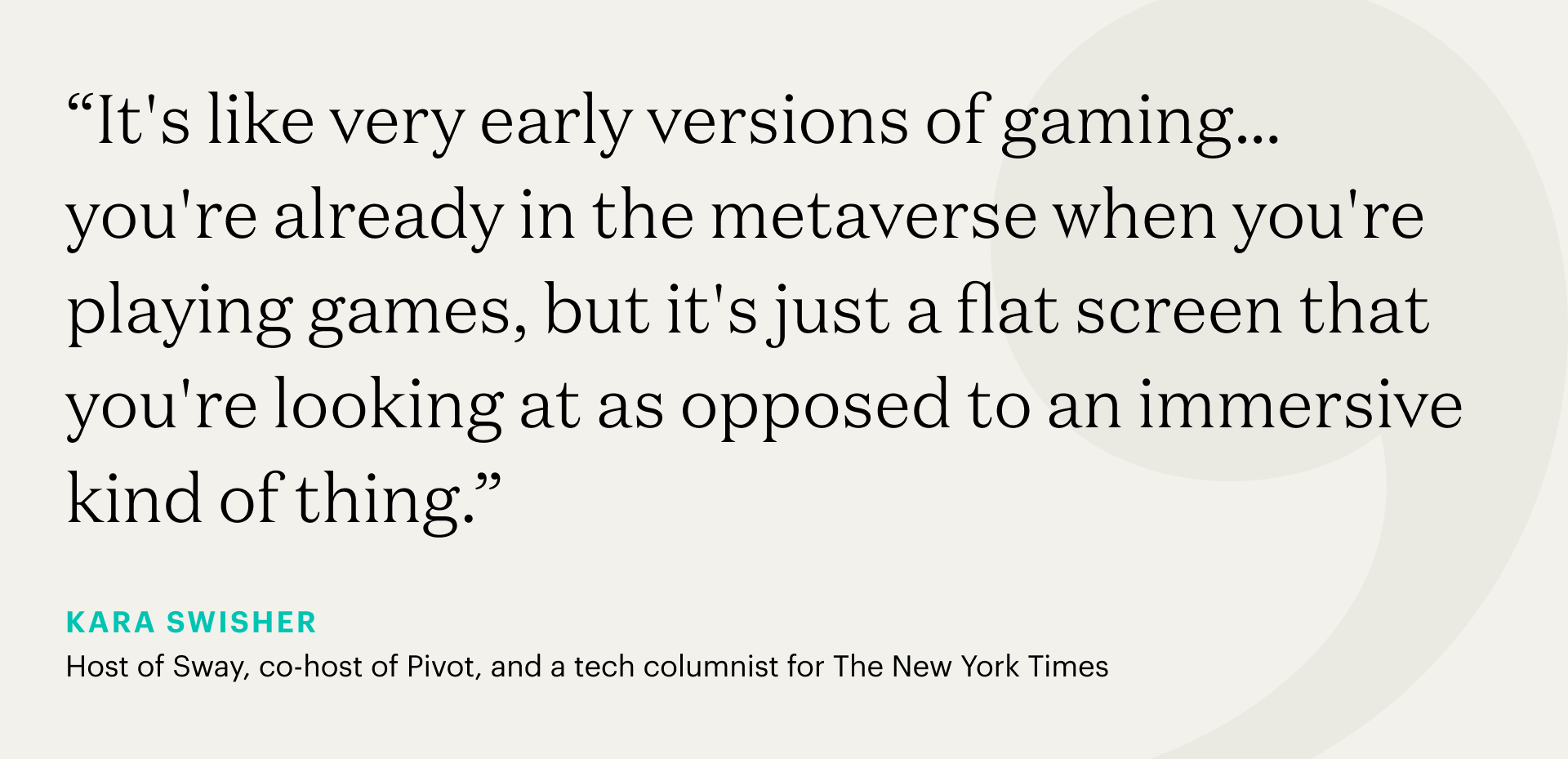
Don't rush to pick out your new virtual OOTD. The metaverse is still in the early stages of development. While it’s not fully here, there are some ways you might be experiencing it:
Video games: Games like Fortnite include metaverse elements like avatars that interact with other players. Players can also get virtual currency (hi, crypto) to dress up their avatars. And gaming company Roblox already allows users to create their own worlds (more on Roblox in a bit).
Second Life: It’s a virtual world that launched in 2003. And allows users to create an avatar that can hang out with other users and shop. It’s been described as a metaverse. And while its popularity peaked in the late 2000s, the company’s now trying to make a name for itself in the next digital frontier.
At work: The collab between Microsoft Teams and Meta’s Workplace is giving people a taste of how platforms can integrate and work together in the metaverse. Both companies allow users to access content from Teams (think: streaming video) and Workplace (think: comment features) without having to switch between apps.
NFTs: Aka Non-fungible tokens. Which are digital collectibles. They represent ownership of digital art, images, and video games. And NFTs are expected to do the same when it comes to representing assets in the metaverse.
Cryptocurrencies: There are thousands of cryptocurrencies. Ranging from the not-so-bitsy Bitcoin to the confusing parody that’s Dogecoin. This digital money is very volatile. But has grown in popularity — especially when it comes to participating and building in the metaverse.
There’s a lot of hype surrounding the metaverse, especially as people throw real-life money at creating immersive 3D environments. Case in point: Real estate sales on four major metaverse platforms topped $500 million last year, according to one analysis. And that number’s expected to double this year.
Those with deep pockets have already started investing. See: Paris Hilton’s virtual island. And Snoop Dogg’s Snoopverse, which apparently already has people spending hundreds of thousands of dollars just to be his neighbor. Then, there’s Big Tech.
“[Meta has] spent $10 billion so far on the effort and have said they're going to spend much more to try…to shift their business to this area. It's a big push by Mark Zuckerberg,” Kara Swisher, host of Sway, co-host of Pivot, and a tech columnist for The New York Times, told our “Skimm This” podcast team.
But while people are making top-dollar investments, experts say ‘proceed with caution.’ Janine Yorio, CEO of Everyrealm (a metaverse and NFT investor and developer), said real estate in this new virtual ecosystem is very risky.
“You have to pay in cryptocurrency. The value of the asset is largely correlated to the value of the underlying cryptocurrency, which tends to be very volatile,” Yorio said. “There is a low likelihood of generating income from a metaverse real estate investment.”
But for those who can shell out, there’s some potential big profits in other areas. The market for virtual goods and services in the metaverse will reportedly be worth $1 trillion. And companies will be right there to advertise it. Which brings us to the next big question…
What will people do in the Metaverse?
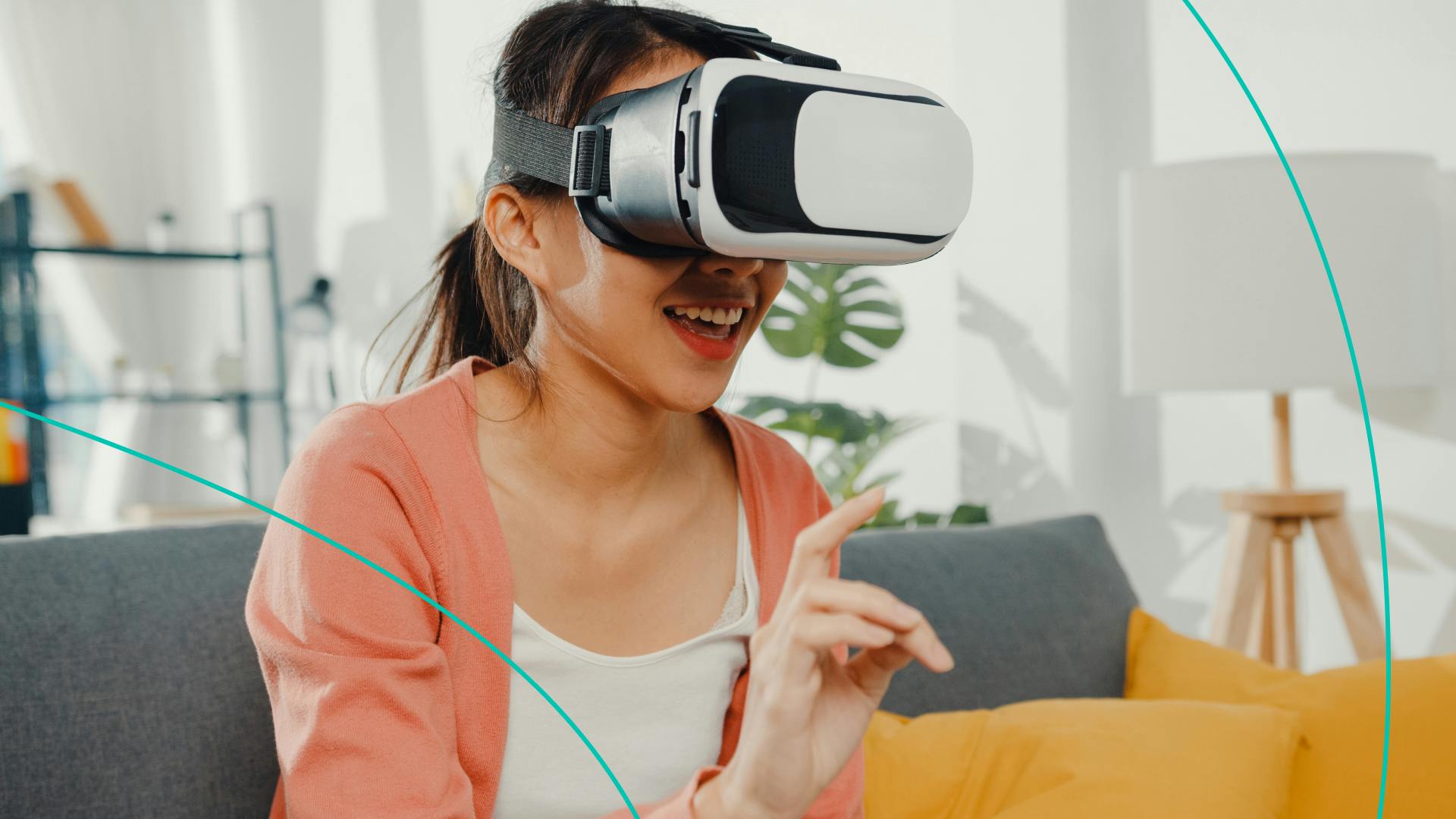
Real self, meet virtual self. In the metaverse, you can merge (or blur) even more of your life together. Yes, beyond what you see and post on Insta and TikTok — all which are part of the 2D internet. So 2021.
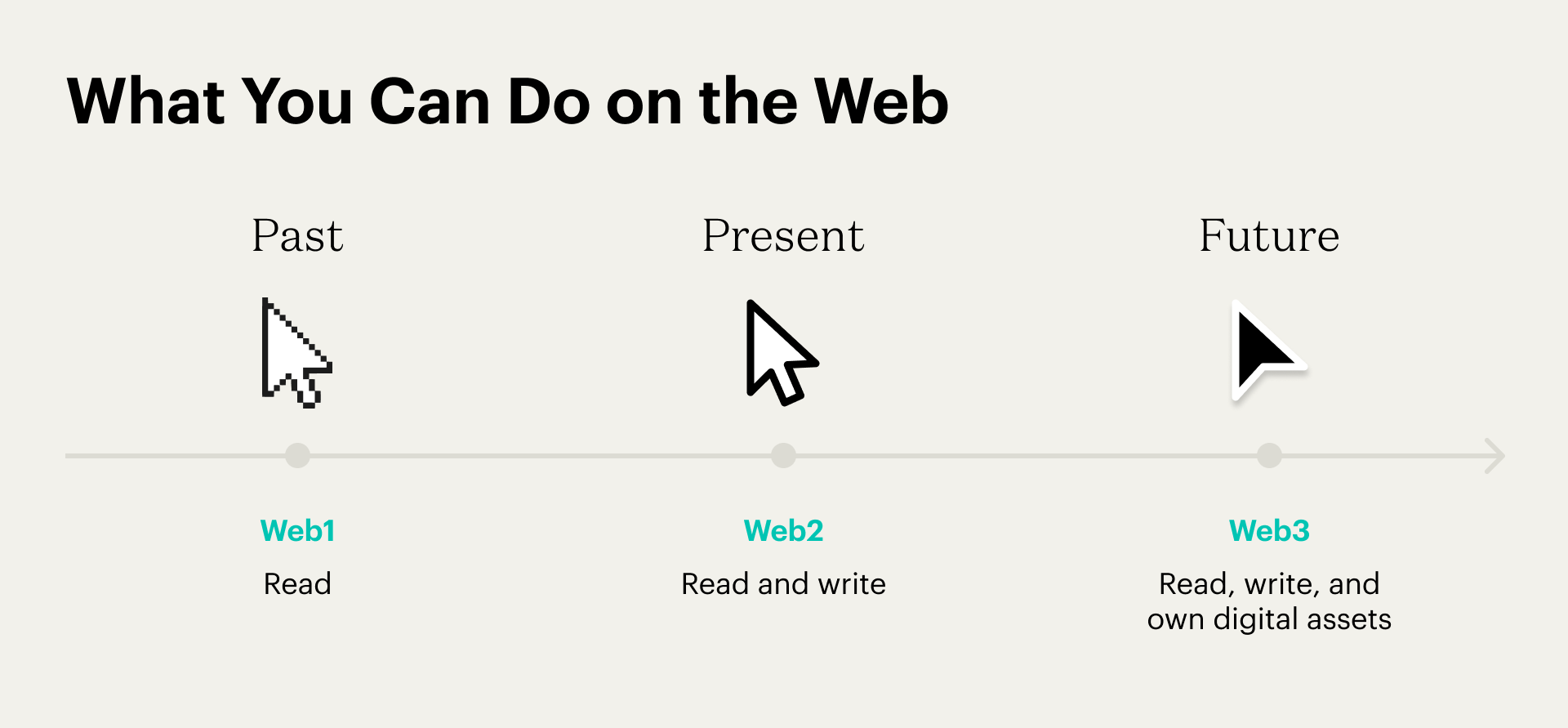
“In the metaverse, we'll see each other. We can wave to each other. I can show you what I'm buying. You can show me what you're buying and it becomes an immersive and social experience,” Yorio explained.
Users will be able to do things like shop, have work meetings, and go to concerts. And they’ll be able to do it with their friends and strangers who live anywhere in the world.
“Whether it’s finding love and making friends, or it’s connecting with people from different parts of the world, or it's flying or shooting people and blowing them up, or being a spy, or time traveler doing drugs that are illegal,” she said. “Those are the kinds of things that are going to draw people into the metaverse.”
In other words, the metaverse will be the Wild West. Hopefully without the violence. Here’s a look at some of the current platforms that are already shaping the metaverse:
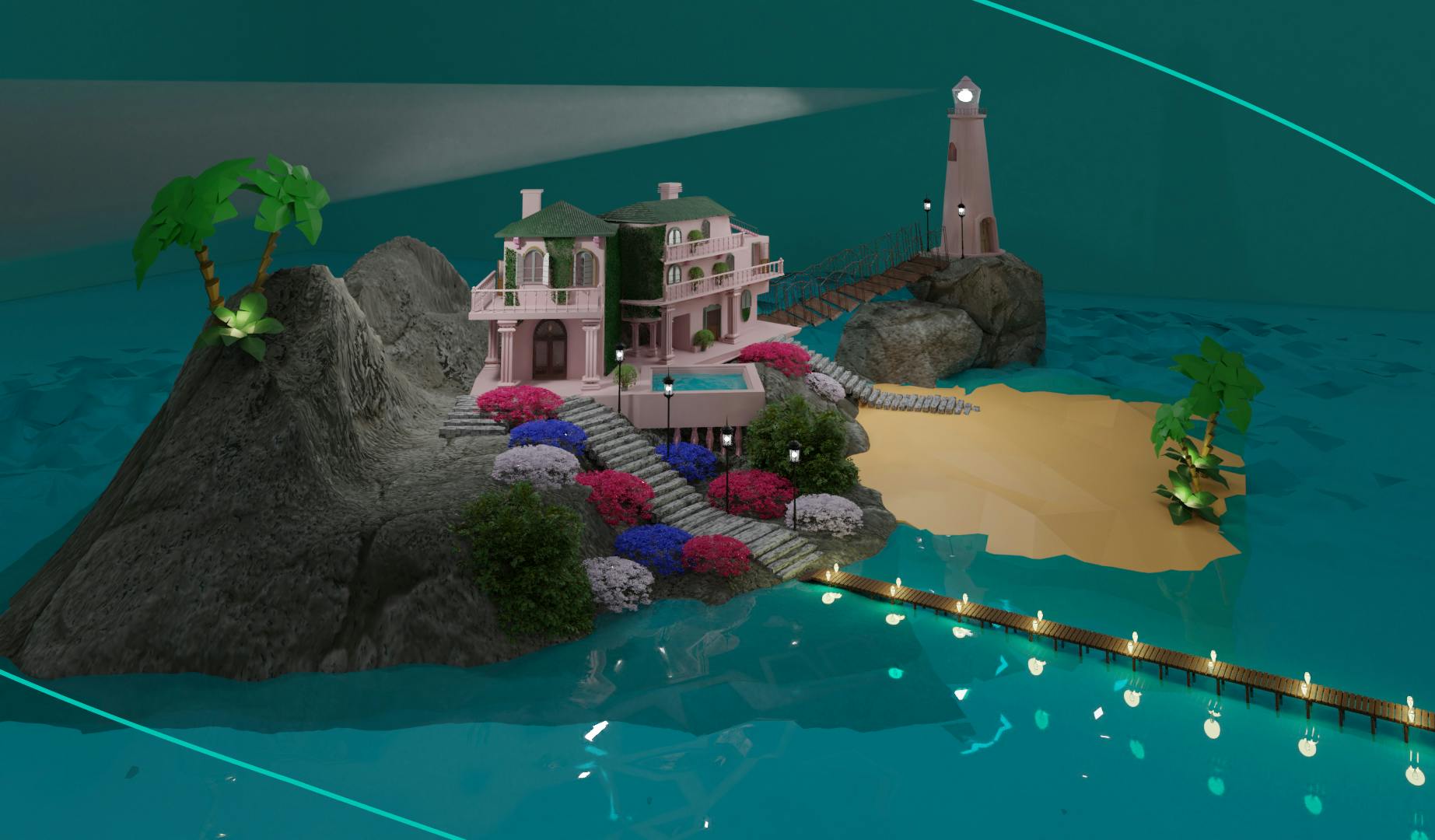
Decentraland: This is a fully decentralized virtual reality platform. Meaning no single person owns it. Users can buy land or make money off of their content using the platform’s cryptocurrency, which can be bought with Ethereum. (Yes, it’s crypto on crypto.) Users can access Decentraland with a digital wallet — aka a personal account that keeps all your digital assets (NFTs and Decentraland purchases).
Horizon Workrooms: This is a VR space for teams to connect. Think: WFH, but in a digital space and with avatars. Horizon Workrooms requires the Quest 2 — a VR headset created by Meta. It lets users access Workrooms and other virtual events. Bonus: It’s free to use.
Roblox: It’s a platform where users can play games developed by other users. And can buy accessories and products from real brands like Burberry and Nike, using the platform’s in-game currency Robux. Game developers can earn Robux and convert it to real money. (That’s one way to have a side hustle.) You can download Roblox for free online and play it via Xbox One, Xbox Series S, or Xbox Series X. And also access it via certain Apple iOS, Android, and Amazon products.
The Sandbox: The company describes itself as a “virtual metaverse” that’s built on the Ethereum blockchain. "Players can build, own, and monetize their gaming experience." They also have a crypto wallet (think: a digital wallet) to store SAND — the currency used in the ecosystem. It also gives people the power to govern the space...aka make the rules.
Does the Metaverse mean mega problems?
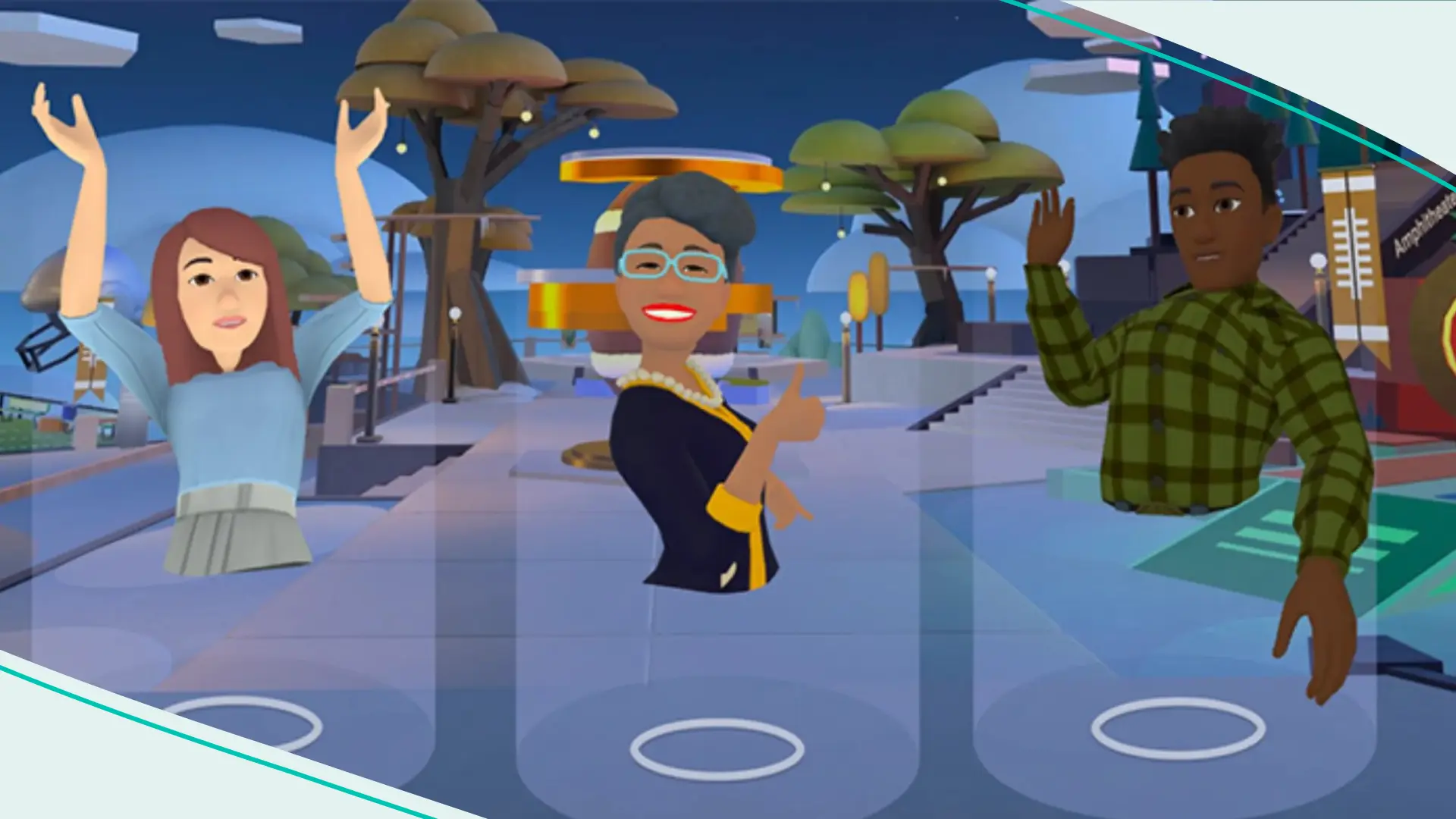
Likely, yes. As the saying goes: mo' money, mo' problems. And in the digital world, those problems usually start with data and privacy. It's no secret that Meta (formerly Facebook) has a long history of data and privacy issues. (See here.) And research suggests Instagram, which Meta owns, has a negative impact on teen girls. Then, there’s also the fact that online platforms have been used to organize things like the Jan. 6, 2021 insurrection. The development of a metaverse has people asking…
Is this another data grab?
Tech analysts and digital rights advocates worry that companies like Meta could get a hold of even more personal data in the metaverse. And that could further open the door to abuse and misinformation. That’s because gadgets like VR headsets and AR software can provide data that shows how users are interacting and behaving within their digital world. Aka $$$ for companies that are looking to advertise or create products in the metaverse.
Does anything really go? Even violence and abuse?
Since December, multiple women have said their avatars have been virtually raped or groped. One woman said the abuse happened when three to four avatars in Horizon Worlds approached her within a minute of joining the game. Another woman said it happened on Population One — a VR shooting game. One BBC researcher posing as a 13-year-old girl witnessed sexual content, racist insults, and a rape threat in one VR world. So…
What’s being done about violence and data concerns in the Metaverse?
Meta has policies for its popular VR headsets, including that bullying, harassment, and stalking all violate their community standards. Anyone who’s guilty of breaking the rules could have their account suspended or banned. Meta’s also established a four-foot radius of personal space for each avatar in Horizon Worlds and Horizon Venues. As for data and privacy concerns, the gov’s historically been slow to act when it comes to new tech. And for now, the metaverse is largely unregulated.
“I think it's great to get ahead of things, but at this point it's so hard to really tell how [the metaverse is] going to look in the future. It's very difficult to plan for,” Yorio said. “I have no doubt that we'll need to figure out clever ways of preventing [users] from hacking and stealing identities or representing themselves as people that they aren’t.”
theSkimm
The metaverse has the potential to open up a world of opportunities that are exciting and creative. But it also raises many concerns about safety and privacy. And if history’s shown us anything, it’s that regulation and oversight often come after people have gotten hurt.
Live Smarter
Sign up for the Daily Skimm email newsletter. Delivered to your inbox every morning and prepares you for your day in minutes.
